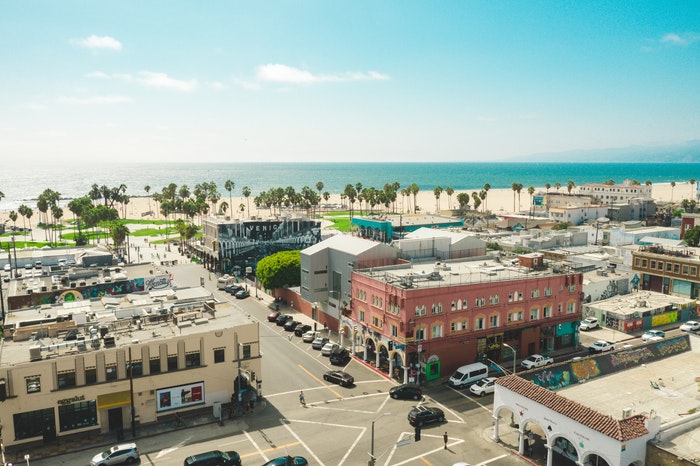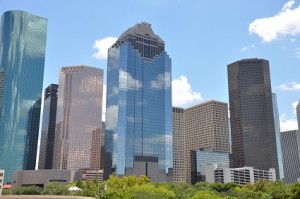September 1st, 2022

Houston Office Market
Latest data from Q2 2022 shows Houston’s total office space inventory at 349.5 million square feet, a significant bump in supply from the mid-2021 figure of 173 million square feet. Despite the increase in stock, there have finally been gains in occupancy, with Q1 signalling this healthy marker for the first time since the start of the pandemic.
There were hints of this recovery at the end of 2021. The trend of last year’s subpar market performance was bucked by Class A and trophy office space (Class A+), which accounted for more than 60% of all leasing activity in Houston during Q3 2021. This positive influence has continued into Q2 2022, with Class A demand being the sole driver for occupancy gains in roughly half of Houston’s office submarkets.
Recently refurbished Class A offices, in developments built after 2005, are bucking the vacancy rate trends. These buildings report only 17% vacancy in Q2 2022, compared to the overall Class A vacancy rate of 25.6%. The new renovation programs undertaken by these mid-age office suppliers have clearly been a hit with Houston businesses, serving to satisfy post-pandemic amenity demands better than their newly developed A Grade counterparts.
Despite these low vacancy rates, the five largest leasing deals during Q2 2022 were for new and Class A CBD office space. This trend can be further illustrated by the newly completed Texas Tower, with occupancy already at 70% leased, despite only opening in the first quarter of 2022. As with the vast majority of major cities in the United States, the Houston CBD appears to be the focal point for the highest activity.
Key Takeaways
- Inventory – 349.5 million square feet
- Overall vacancy – 23.4% (a slight decrease from Q1’s 23.6%)
- Net absorption – negative 90,000 square feet (due to coming off the back of the bumper mid-year figure of +641,7000 when several substantial tenants moved into newly completed offices)
- Availability – 27.6%
- Average asking rents – $30.80 (up 1.9% YOY)
- Investment sales – $156 per square foot (up from $116 in Q2 2021)
Read the rest of this entry »
Tags: 2022, coworking, Houston, industrial, market reports, Office Space, retail, vacancy rates
Posted in Best Cities for Business in the USA, CRE, Houston, Market Overviews | No Comments »
Add to: Del.icio.us | Digg
February 11th, 2022

Notable Office Market Insights
- Ongoing recovery is the main theme, continuing the trend seen in most office markets throughout 2021.
- Positive absorption indicators.
- Slight increase in rental rates.
- Marked differences in occupancy levels, vacancy rates and general performance from city to city.
- Remote working practices are still commonplace in key markets, such as San Francisco.
- 142 million square feet of office space currently under construction.
Lease Rates & Asking Rents
Recent data from Commercial Edge outlines a nationwide rental listing rate average of $38sq/ft in January 2022. These figures may be seen as somewhat inflated due to the number of high quality spaces currently listed due to being vacant, with Class A workspaces being listed at much higher prices.
According to Avison Young, Q4 average rental prices per square foot in gateway markets were as follows:
Read the rest of this entry »
Tags: Boston, chicago, Commercial Real Estate, Dallas, dc, Florida, Houston, Los Angeles, Manhattan, new york, office market report, Office Market Trends, Office Space, Office Talk, San Francisco, Texas, USA
Posted in National Market Reports, Office Space Forecasts and Trends, Office Talk, Real Estate, Trends and Statistics | No Comments »
Add to: Del.icio.us | Digg
February 25th, 2021
 In a previous blog post we examined the performance of the commercial real estate market in some major US cities. This is the second article in this series, which uses data from late 2020 and early 2021 to examine vacancy and supply rates in cities such as Los Angeles, Chicago, Atlanta and Houston. These statistics illustrate the impact of COVID-19 on the commercial property rental market, as well as the types of properties that are holding strong in the face of negative trends.
In a previous blog post we examined the performance of the commercial real estate market in some major US cities. This is the second article in this series, which uses data from late 2020 and early 2021 to examine vacancy and supply rates in cities such as Los Angeles, Chicago, Atlanta and Houston. These statistics illustrate the impact of COVID-19 on the commercial property rental market, as well as the types of properties that are holding strong in the face of negative trends.
Los Angeles
Los Angeles is a hub for creative, media, and entertainment companies, many of which are office-based. The city’s proximity to major cargo ports makes it convenient for logistics and distribution businesses, both of which have kept the industrial real estate market strong.
Offices
- Vacancy rates in downtown Los Angeles are 21.5%.
- In Q4 20202, there was more than 5.5 million square feet for vacant space, with 3.4 million feet being in the Financial District.
- The majority of vacant inventory involves Class A offices.
- Supply increased by more than 2 million square feet in the past 12 months.
- No new supply is expected to enter the market as no projects are currently under construction in the CBD area.
- Vacancy rates average 22.5% outside of the CBD, however, they reach 56% in the Fashion District.
- Vacancy rates are just under 18% in the Greater Los Angeles area.
Read the rest of this entry »
Tags: 2021, Atlanta, Brooklyn, chicago, Houston, Los Angeles, Seattle, vacancy and supply
Posted in Atlanta, Best Cities for Business in the USA, Brooklyn, Chicago, Houston, Los Angeles, Office Space Forecasts and Trends, Seattle, Trends and Statistics | No Comments »
Add to: Del.icio.us | Digg
March 28th, 2017
 In line with global trends, demand for creative space is also on the rise in Texas’ largest city. Houston’s creative sector has been described as a ‘sleeping giant’ due to its enormous potential to become one of the leading sources of income and employment in the Lone Star state. Currently, over 113,000 Houston companies are involved in this sector, which generates $25b in sales and employs nearly 180,000 people across the state.
In line with global trends, demand for creative space is also on the rise in Texas’ largest city. Houston’s creative sector has been described as a ‘sleeping giant’ due to its enormous potential to become one of the leading sources of income and employment in the Lone Star state. Currently, over 113,000 Houston companies are involved in this sector, which generates $25b in sales and employs nearly 180,000 people across the state.
In view of these figures, it is hardly surprising to see that companies in virtually every business sector are considering adding creative space to their business accommodation offerings. This is the case despite the dominance of the energy and engineering sectors, which typically are not as innovative as others, although they are beginning to understand the value of creative workspace and to realize that conventional office space presents some obstacles to innovation and creativity.
Below are some examples that showcase the most inspiring creative office spaces in Houston.
GreenStreet is a 570,000-square feet mixed-use commercial development that is home to several units that offer collaborative space in one of the city’s top locations. Creative space ranges from small floor plates to large work areas of up to 37,000 square feet, all of which are designed and furnished to facilitate collaboration and innovation. Units feature open plan space, private and shared offices, training and meeting rooms, kitchen, and dedicated break and wellness areas.
There is a great deal of creative space springing in Houston’s Midtown and Uptown, although over the past 5 years warehouse-to-office conversions have also become common along Washington Avenue, Montrose, and east of downtown. In Midtown, Wi+CoWork offers shared space to the local creative community on a membership basis. Office space at Wi+CoWork includes access to conference rooms, community events, and office support services. Read the rest of this entry »
Tags: Creative Workspace, Houston, Office Space, Texas
Posted in Best Cities for Business in the USA, Business Start Ups | No Comments »
Add to: Del.icio.us | Digg
January 12th, 2015
 For several decades, Houston has been considered one of the most successful economies in the southern United States. In fact, and according to Forbes, Houston is the third best place to do business in the country. The city’s bustling and highly diverse economic scene is largely driven by the energy industry, and other important sectors include manufacturing, research and development, aerospace, information technology, and health care.
For several decades, Houston has been considered one of the most successful economies in the southern United States. In fact, and according to Forbes, Houston is the third best place to do business in the country. The city’s bustling and highly diverse economic scene is largely driven by the energy industry, and other important sectors include manufacturing, research and development, aerospace, information technology, and health care.
Being one of the most important corporate centers in North America, the city of Houston is well equipped to accommodate the real estate needs of existing and prospective businesses. This article looks at the most important trends affecting the commercial property market in Houston, having a special focus on the office market.
Key trends and developments in the Houston commercial property market
Generally speaking, over the past five years the Houston commercial real estate market has been characterised by high activity and construction levels and by increasing absorption rates. By the third quarter of 2014, the local market had absorbed 4.4 million square feet of office space, and by the end of the year a further 17.3 million sq ft of space were under development. The vast majority of new office developments were geared towards the needs of the energy sector, having a significant amounts of floor space being built at the city’s ExxonMobil campus and having a large number of pre-lease transactions closed by multinationals like BHP, Shell, and Nobel Energy.
Due to increased demand, citywide rental rates have been steadily climbing, and during 2014 alone they grew by an average 10.6 per cent. Higher increases were evident in commercial properties in the city’s business district. Vacancy rates have decreased from 12.9 per cent in 2013 to 11.9 per cent in 2014. While year-on-year leasing activity levels decreased during 2014, the figures are set to increase once again during the following 12 months. Read the rest of this entry »
Tags: commercial property, Houston, Texas
Posted in CRE, Houston, Texas, Trends and Statistics | No Comments »
Add to: Del.icio.us | Digg
October 30th, 2014
 Since the discovery of oil in Houston, Texas in 1901, the city has relied on energy revenue for its growth and survival. That means that Houston followed the trends of energy prices, which took nose dives in the 1970’s, 1980’s and 2000’s. But each time, Houston was able to bounce back and open up new areas of energy exploration and refining that have allowed the city to grow. As time has gone by, Houston has learned to diversify its economy and a new Houston is starting to emerge from under the shadow of the energy industry.
Since the discovery of oil in Houston, Texas in 1901, the city has relied on energy revenue for its growth and survival. That means that Houston followed the trends of energy prices, which took nose dives in the 1970’s, 1980’s and 2000’s. But each time, Houston was able to bounce back and open up new areas of energy exploration and refining that have allowed the city to grow. As time has gone by, Houston has learned to diversify its economy and a new Houston is starting to emerge from under the shadow of the energy industry.
Major Industries in Houston
One of the industries that Houston has turned to for balancing out the energy sector is the chemical manufacturing industry. Today, the city of Houston and its associated industries produce almost 40 percent of all of the basic chemicals used by domestic and international industry. It is estimated that nearly 40,000 people in Houston area work in the chemical manufacturing and refining industry.
Along with energy and chemical manufacturing, Houston also relies heavily on the technology sector for jobs. The space exploration and engineering industry in Houston employs well over 17,000 people as scientists and engineers. The Houston economy benefits significantly from its abundance of high-paying jobs.
Key Economic Drivers in Houston
While Houston benefits greatly from advances in its energy and chemical industries, one of the prime economic drivers for the city’s economy is its growth in the service industries. Nearly 16 percent of the Houston working population work in insurance sales, real estate and personal finance. This number continues to grow and so does the revenue generated by these industries. Read the rest of this entry »
Tags: Business Advice, Houston, Office Rental
Posted in Business Advice, Business Spotlights, Business Start Ups, Texas | No Comments »
Add to: Del.icio.us | Digg


 In a previous blog post we examined the performance of the commercial real estate market in some major US cities. This is the second article in this series, which uses data from late 2020 and early 2021 to examine vacancy and supply rates in cities such as Los Angeles, Chicago, Atlanta and Houston. These statistics illustrate the impact of COVID-19 on the commercial property rental market, as well as the types of properties that are holding strong in the face of negative trends.
In a previous blog post we examined the performance of the commercial real estate market in some major US cities. This is the second article in this series, which uses data from late 2020 and early 2021 to examine vacancy and supply rates in cities such as Los Angeles, Chicago, Atlanta and Houston. These statistics illustrate the impact of COVID-19 on the commercial property rental market, as well as the types of properties that are holding strong in the face of negative trends. In line with global trends, demand for creative space is also on the rise in Texas’ largest city. Houston’s creative sector has been described as a ‘sleeping giant’ due to its enormous potential to become one of the leading sources of income and employment in the Lone Star state. Currently, over 113,000 Houston companies are involved in this sector, which generates $25b in sales and employs nearly 180,000 people across the state.
In line with global trends, demand for creative space is also on the rise in Texas’ largest city. Houston’s creative sector has been described as a ‘sleeping giant’ due to its enormous potential to become one of the leading sources of income and employment in the Lone Star state. Currently, over 113,000 Houston companies are involved in this sector, which generates $25b in sales and employs nearly 180,000 people across the state.